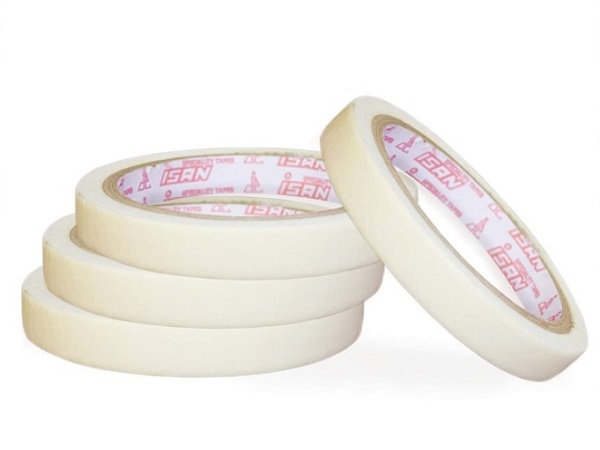For DIYers, using masking tapes can be a frustrating experience. It can be tough to ensure it is applied straight, and it can tear much easier than most would care to admit. But, there is something hugely satisfying about peeling it off when the job is done and seeing crisp lines that wouldn’t look out of place on a hospital bed.

Masking Tape
Masking tape is a lightweight paper tape. It is pressure sensitive, which makes it easy to tear off the roll as you need it and simple to lift from surfaces. It is available in different adhesive strengths and widths to tackle a variety of tasks. Some masking tapes are rated based on how long they can adhere to a surface before they leave a residue. If you don’t follow these guidelines you are likely to leave glue on the surface, which will provide a challenge to remove.
A low-tack tape is the weakest adhesive strength, it is the perfect solution for a delicate situation. For example, if you are painting geometric shapes and you have recently painted the wall, a low-tack tape will ensure you don’t lift your new paint. Blue masking tape is a low-tack masking tape that is most commonly used in the painting industry. It is coloured blue so you can easily locate it to remove it once the painting is complete. Many of the low-tack masking tapes are brightly coloured, and it is all for painting delicate surfaces and for easy identification once the job is done.
Do Professional Decorators Use Masking Tape?
Absolutely. While not every decorator chooses to use masking tape, it is still a common weapon in the decorator’s arsenal. It ensures a clean finish and protects the client’s property.
Masking tape should be used to tape off areas that shouldn’t be painted. It can be used to mask off skirting boards, coving, windows, ceilings, light switches and power points. It can also be used to affix your dust sheets to the floor or to furniture. If you do use it to affix dust sheets to furniture, ensure it is low tack to avoid leaving residue.
Professional decorates select their masking tapes based on a few key factors – width, adhesive, and surface. Masking tape is available in a variety of widths to handle an assortment of tasks, from painting patterns to spraying cars. You can also purchase masking tape based on what surface you are working with – a textured tape will help prevent spread. Low tack is generally the most suitable solution for home decorators, but high tack masking tape is available.
Use An Applicator
Professional decorators use a masking tape applicator to easily mask off larger areas. It might be easy enough to mask skirting boards. However, a masking tape applicator will make masking off large areas a cinch because it doesn’t just apply the tape, it can also apply masking paper at the same time. If you plan to use a spray gun, you should opt to use a masking tape applicator.
Be sure to read the packaging to ensure you remove the masking tape in the correct timeframe. If you remove it too early, it can splatter paint on your fresh paintwork. And if you remove it too late, it can leave a residue that will be difficult to remove.


